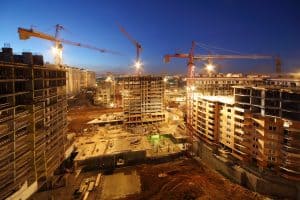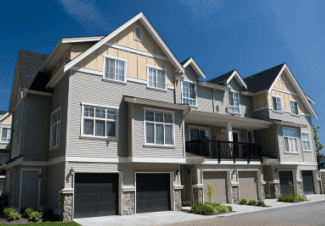Modular Construction and the Future of Development

However, we have observed that adopting a modular mindset has proven difficult for many in the development space, where the primary approach hasn’t changed all that much in the past 100 years. Add to this a few spectacular missteps, exemplified by the shutdown of one-time industry darling Katerra, and it’s easy to see how misconceptions about modular construction keep it from reaching the mainstream.
Still, it’s hard to argue that modular won’t become a significant player in the development of multifamily housing and other properties in the near future. A McKinsey & Company report suggests the market for modular could reach $130 billion, or about 14 percent of all construction, in the U.S. and Europe by 2030, assuming a moderate rate of growth. Emerging technologies and a newfound desire in the wake of COVID-19 to lean into disruption could push that number even higher.
Developers and investors need to understand the full picture of what it means to build modular—moving from what McKinsey calls a “project” mindset to a “product” approach—in order to put the power of modular into action and meet the growing housing need in the U.S. and beyond. Here are a few of the considerations our team advises across modular projects in all sectors.
ASSEMBLE AN EXPERIENCED TEAM
Modular construction does not happen along the same timelines as traditional design-bid-build or even design-build approaches. It’s easy to get caught up in the benefits—reducing project timelines by as much as 50 percent, according to McKinsey—and overlook the changes that are required to make modular successful.
These include a design discipline to ensure the manufacturing process starts early to deliver successful modular components. Modular may also reduce the number of different unit types that can exist within a multifamily development, limiting customization at the unit level, though not necessarily for the development as a whole.
Finally, modular construction requires more upfront costs and cash flow than traditional builds, a reality that is offset by the savings created through economies of scale and quicker speed to market. Even where savings aren’t immediately realized, the speed to market is often a critical factor for developers, outweighing other potential downsides. Your team needs to understand the risks and rewards at every stage and manage the project accordingly.
BE MINDFUL OF MUNICIPAL RISK
Modular construction is not the focus of the International Building Code, the guide that is adopted and amended by municipalities to create their own unique building guidelines, standards and regulations. Rather than assuming issues left unaddressed by the code get an automatic exemption, it would be wise to prepare for greater scrutiny and time spent working through design details.
While modular industry advocacy groups have stepped up to address the challenges of requiring modular developments to adhere to traditionally constructed spaces, there is still a lot of variety at the state, county and municipal level and many instances of regulations being decided on the fly. Questions related to plant process inspections, off-site quality control, approval of building plans, and inspections of off-site construction are just a few of the items that must be resolved if a project is to move forward.
Some municipalities may not be willing to roll the dice on a major modular project, limiting building heights, for instance, to keep projects within their reference framework. Understanding the local perspective can help avoid costly delays or set backs throughout the project.
IT’S ABOUT THE PEOPLE, NOT JUST TECHNOLOGY
While incorporating new and emerging technology into the existing construction process is important to saving time and money—and making construction safer and more sustainable overall—it’s only one piece of a complex puzzle.
Technology will create efficiencies by enhancing design and logistics, but there is always a human element to development—particularly in the multifamily space, where people live their lives in the homes that we build. Regardless of the income level of the future tenants of a modular multifamily project, providing high-quality and dignified housing should be a priority supported by this innovative approach. Putting people first in all aspects of development will help ease any concerns related to modular development.
Source: multihousingnews.com















 Accessibility
Accessibility